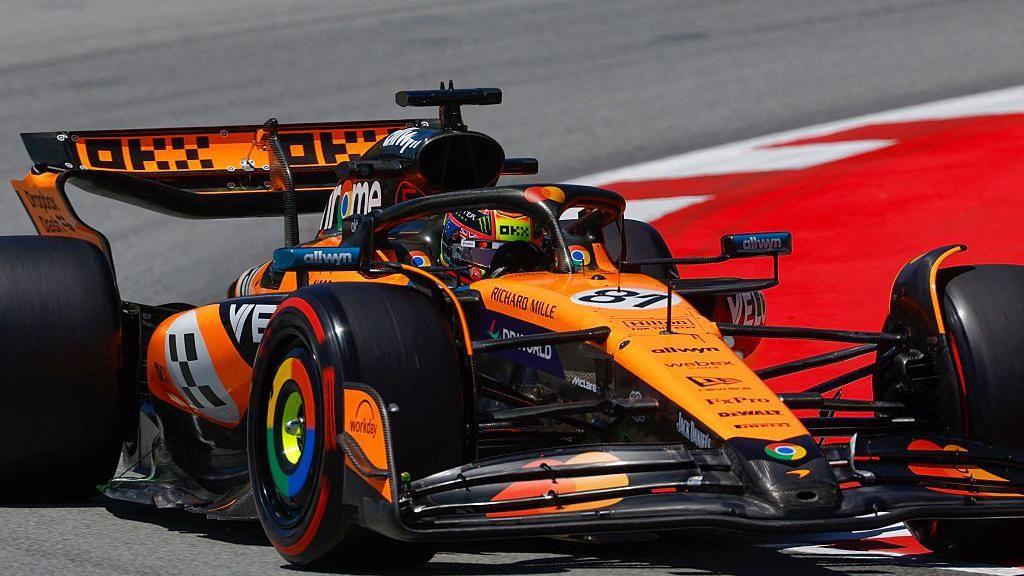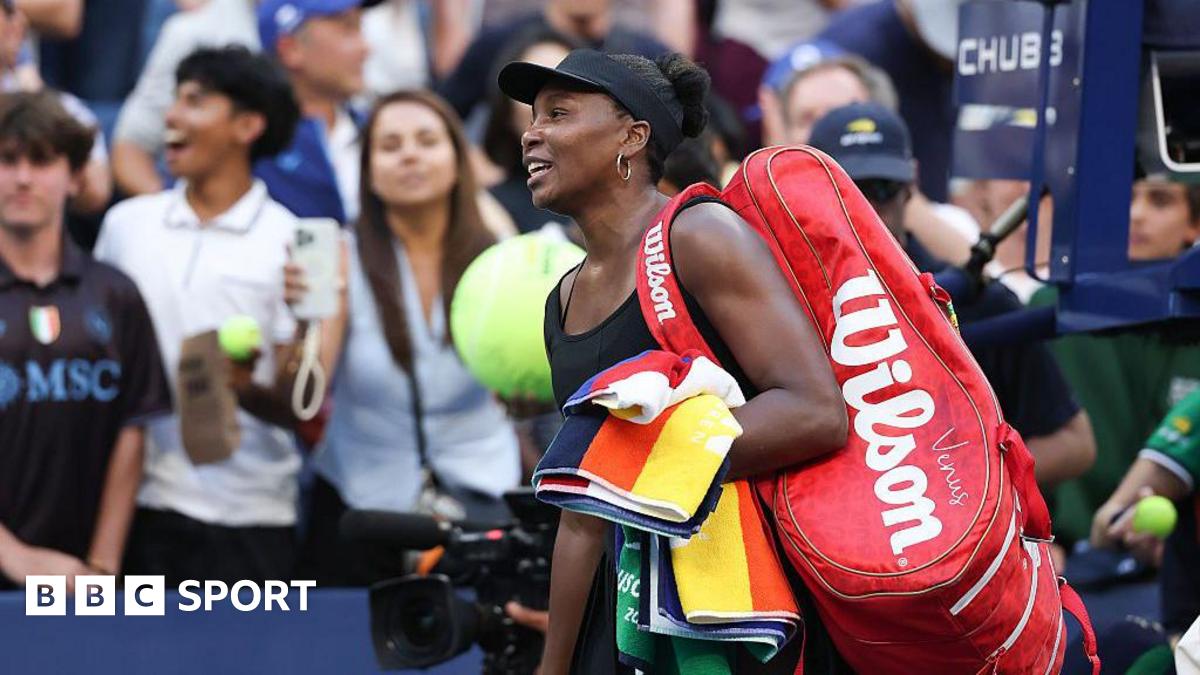 Image source, Getty Images
Image source, Getty Images
Oscar Piastri is three points ahead of team-mate Lando Norris in the drivers' championship
F1 correspondent at the Circuit de Barcelona-Catalunya
McLaren's Oscar Piastri topped Friday practice at the Spanish Grand Prix from George Russell's Mercedes.
Piastri was 0.286 seconds quicker than Russell, with Red Bull's Max Verstappen and McLaren's Lando Norris third and fourth a further 0.024secs behind after clocking exactly the same lap time.
Ferrari's Charles Leclerc was fifth - six places and 0.234secs ahead of team-mate Lewis Hamilton, who complained over the radio his car was "undriveable".
Mercedes' Kimi Antonelli was sixth fastest, ahead of Aston Martin's Fernando Alonso.
Alpine's Pierre Gasly, and the Racing Bulls of Isack Hadjar and Liam Lawson completed the top 10.
Piastri's pace-setting lap meant McLaren topped both sessions - Norris was quickest by 0.367secs from Verstappen in the first session earlier in the afternoon.
Spanish Grand Prix: Five things to know before race weekend
On the race runs, Verstappen and Norris set the pace on the medium-compound tyres, the Dutchman appearing to have a very narrow advantage.
McLaren and Red Bull therefore look closely matched on a weekend that marks the introduction of a rule change aimed at clamping down on the flexibility of front wings.
But it will be hard to judge the impact of the test because relative form has swung depending on circuit characteristics this year.
Verstappen and Red Bull have tended to be a match for McLaren on faster circuits, and Barcelona falls into a similar category there with Suzuka, Jeddah and Imola.
At the same time, though, the weather is hot in Spain, at about 30C, and McLaren's biggest advantage has been in managing rear-tyre temperatures over a race stint, which could become a factor in the race.
Has front-wing rule change made a difference?
The new front-wing flexibility test introduced by governing body the FIA is the talking point of the weekend. It is aimed at reducing the amount teams can use flexing wings to control aerodynamic performance.
Red Bull - the prime force behind persuading the FIA to introduce the test - and Ferrari hope the tougher restrictions will boost their competitiveness. McLaren believe it will have next to no effect on them.
Teams have long used front-wing flexibility to boost speed on the straights while retaining downforce in the corners. The idea is the wing 'backs off' on the straight to reduce drag before moving back into its maximum downforce-producing position for the corners.
But under this current generation of cars the phenomenon has proved useful in tuning the cars between high- and low-speed cornering performance.
The generations of cars introduced with new rules in 2022, which focus on underbody downforce produced by so-called Venturi tunnels, have proved prone to low-speed understeer - a lack of front grip - and high-speed oversteer - too much front grip.
By making the front wings become less effective at higher speeds, teams can reduce this nervousness in quick corners without making the cars too hard to drive at low speed.
McLaren and Mercedes are widely perceived to have been the pioneers of this particular approach, but it remains to be seen whether the tougher tests will have any effect.

 Movie
Movie 3 months ago
136
3 months ago
136 






![Presidents Day Weekend Car Sales [2021 Edition] Presidents Day Weekend Car Sales [2021 Edition]](https://www.findthebestcarprice.com/wp-content/uploads/Presidents-Day-Weekend-car-sales.jpg)



 English (United States)
English (United States)